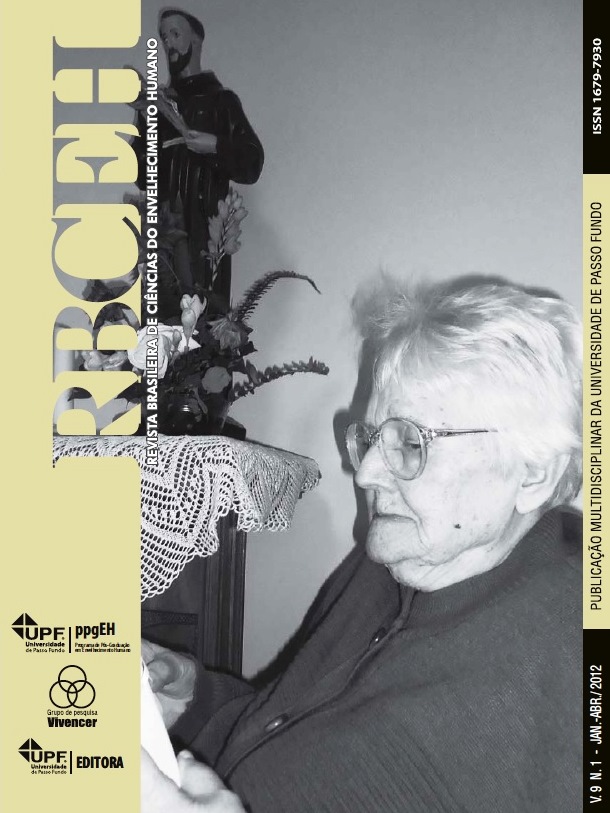Uso de fármacos e risco de interações medicamentosas em idosas acompanhadas pelo Programa de Atenção ao Idoso na área urbana de um município do Rio Grande do Sul
DOI:
https://doi.org/10.5335/rbceh.v9i1.1699Palavras-chave:
Assistência a idosos. Interação. Medicamentos.Resumo
O objetivo do estudo foi caracterizar o uso de medicamentos e avaliar o risco de interações medicamentosas em idosas acompanhadas pelo Programa de Atenção ao Idoso da Unijuí. Realizou-se estudo ecológico com coleta de dados secundários. Coletaram-se dados cadastrais em novembro de 2009, classificando-se os medicamentos conforme a Anatomical Therapeutic Chemical e interações segundo a Drug Interaction Facts. De março de 2008 a julho de 2009 estavam em acomO objetivo do estudo foi caracterizar o uso de medicamentos e avaliar o risco de interações medicamentosas em idosas acompanhadas pelo Programa de Atenção ao Idoso da Unijuí. Realizou-se estudo ecológico com coleta de dados secundários. Coletaram-se dados cadastrais em novembro de 2009, classificando-se os medicamentos conforme a Anatomical Therapeutic Chemical e interações segundo a Drug Interaction Facts. De março de 2008 a julho de 2009 estavam em acompanhamento dez idosas, com idade média de 77,7 anos, que utilizavam 43 medicamentos, prevalecendo aqueles para o aparelho cardiovascular, sistema nervoso e trato alimentar e metabolismo. Verificou-se que quatro idosas estavam expostas a 17 interações distintas, com média de 4,25 por idosa. Sulfato ferroso, levodopa e levotiroxina envolveram-se em três prováveis interações cada um. Uma possível interação apresenta nível de significância 1; cinco, nível 2; duas, nível 3; quatro, nível 4, e cinco, nível 5. Esses resultados indicam anecessidade de organização da equipe de saúde para o atendimento e monitoramento desse grupo, além da capacitação dos familiares e/ou responsáveis pelas idosas para auxiliarem no cuidado/atendimento a esse grupo.Downloads
Os dados de download ainda não estão disponíveis.
Downloads
Publicado
2013-03-27
Edição
Seção
Artigos Originais
Licença

Todos os artigos estão licenciados com a licença Creative Commons Atribuição-NãoComercial-SemDerivações 4.0 Internacional. A Revista é detentora do Copyright.
Como Citar
Uso de fármacos e risco de interações medicamentosas em idosas acompanhadas pelo Programa de Atenção ao Idoso na área urbana de um município do Rio Grande do Sul. (2013). Revista Brasileira De Ciências Do Envelhecimento Humano, 9(1). https://doi.org/10.5335/rbceh.v9i1.1699




